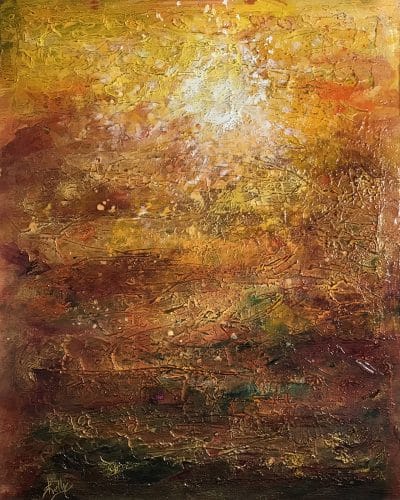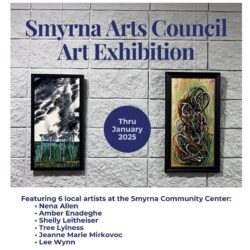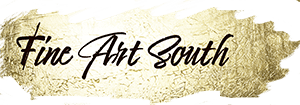It’s not always easy to know what art you should collect. Should you buy something you don’t like? Is the art “high quality” enough to pay a lot for it, and what does that mean? Are “quality” and “value” a measurable thing in art, or should other factors be involved?
Many people buy art because they like it. Some don’t. I once had a woman buy a painting from me at an art fair because she told her friend it would be a “good investment”. It was hard for me to agree with her, because she was buying a watercolor painting on Yupo, which is not the most permanent, centuries-lasting type of art. What she really meant was, she liked it.
Some collectors, when the price gets high enough, think that is an indication of value by itself (it’s not). Others wonder whether some art is actually worthy of collecting if the artist is not well known. Their confusion and worry is based on the idea that art has value due to popularity, not because it’s pleasing to them, but whether they feel the artist has a future or some other financial consideration that has nothing to do with reality. Personally, when I like a piece of art, I buy it. I don’t worry about any other factor except cost. There is no other value to a painting, other than whether someone likes it, values it, cares about it and feels they should own it. It’s a very personal choice and connection. Buying art should be easy, when you stop worrying about “value”. But for many people it’s still a tough decision. Here is some free advice on collecting abstract art.
Abstract paintings can sometimes be confusing to understand at first glance, but they also have a deep appeal to them if done right. When it comes to actually making a purchase in today’s art markets, determining which pieces are of quality can be hard to do.
With the increase of abstract paintings that are almost identical in size, color and texture, collectors are unsure what they should even be looking for in a new abstract art. In recent years, the term “zombie formalism” has been used to describe abstract paintings with these similarities.
Don’t let this discourage you from getting out there and finding abstract paintings you love. Just keep in mind that finding pieces of quality might take some effort.
The value of abstracts is especially hard to know for sure.
We have all seen the abstract paintings that follow an obvious formula. Paintings that follow patterns, especially abstract and landscape paintings, can tend to look like they came off an assembly line. In some cases, they actually have. China mass produces cheap paintings that end up in American furniture and department stores. Below is some “abstract art” from Target, the store.

And remember that little girl artist “prodigy” whose father was actually guiding her painting, but her work sold out in gallery shows? It was sold for thousands of dollars. But now she is a grown up artist, and not so terribly successful. So artists’ success comes and goes. You can’t really consider that as a reason to buy a painting.
Many “zombie” paintings follow some rule or design the artist learned somewhere. I know of a prominent watercolor artist who actually teaches students to follow a complicated and deliberate pattern of tracing objects on paper, to come up with an abstract “pattern”. The paintings of the teacher and the students all look alike. I don’t think any artist should be striving to produce art that looks like their teacher’s, or out of the mind of anyone but themselves.
Most real artists tend to fight these formulas and “rules” for the most part, but when artists are new at abstraction and they think they want to try it, they might think there is some magic formula. There isn’t! And, artists are supposed to be rule breakers, so who are these people who are following these rules? Following rules is another way of saying “copying”. I don’t think most artists would like to be accused of copying, though I suspect we all have done it at some point in our artist lives.

Some art is recently described as Zombie Formalism. I first read about Zombie Formalism from this article, which is both about flipping art and about certain types of art that is lazily produced and then somehow becomes in high demand and sells for hundreds of thousands of dollars. (And need I mention these often flipped artists are nearly always men? 99% of the time.)
Two notable examples of Zombie Formalism would be the electroplated silver monochromes of Jacob Kassay (b. 1984) and the “Rain Paintings” of Lucien Smith (b. 1989), both recent favorites of the art flippers. (Kassay’s auction record is $317,000, reached last fall at Phillips New York, and the high price for a “Rain Painting” is $372,000, set just two months ago at Sotheby’s London, according to the Artnet price database.)
With their simple and direct manufacture, these artworks are elegant and elemental, and can be said to say something basic about what painting is—about its ontology, if you think of abstraction as a philosophical venture. Like a figure of speech or, perhaps, like a joke, this kind of painting is easy to understand, yet suggestive of multiple meanings. (Kassay’s paintings, for example, are ostensibly made with silver, a valuable metal that invokes a separate, non-artistic system of value, not unlike medieval religious icons, which were priced by both their devotional subjects and by the amount of gold they contained.) Finally, these pictures all have certain qualities—a chic strangeness, a mysterious drama, a meditative calm—that function well in the realm of high-end, hyper-contemporary interior design.
Another important element of Zombie Formalism is what I like to think of as a simulacrum of originality. Looking back at art history, aesthetic importance is measured by novelty, by the artist doing something that had never been done before. In our Postmodernist age, “real” originality can be found only in the past, so we have today only its echo. Still, the idea of the unique remains a premiere virtue. Thus, Zombie Formalism gives us a series of artificial milestones, such as the first-ever painting made with the electroplating process (Kassay), and the first-ever painting done using paint applied in a fire extinguisher (Smith).
Personally I love Jackson Pollock’s paintings, but the “rain” paintings do nothing for me and I see nothing in them but paint splatters. But that’s OK. I would buy it if it was less expensive and I liked it!
I used to think that good art had to stand for or be about some idea, and I still think that is true, but there are lovely paintings that don’t seem to mean anything. Like, at the moment, I’m very partial to brightly colored abstracts that may very well mean nothing. But I don’t need to see paint applied with a fire extinguisher. Or a Q-tip. Or a dog’s paws. I think what bothers me the most about zombie formalism and other “empty” art is that people are making so much money from it and it’s so bad. There is so much bad art in the world, and some of it is hugely sought after by people with lots of money.
I hope people will discover Fine Art South and leave their collecting woes behind. Let it be fun! Buy some art you actually like!






